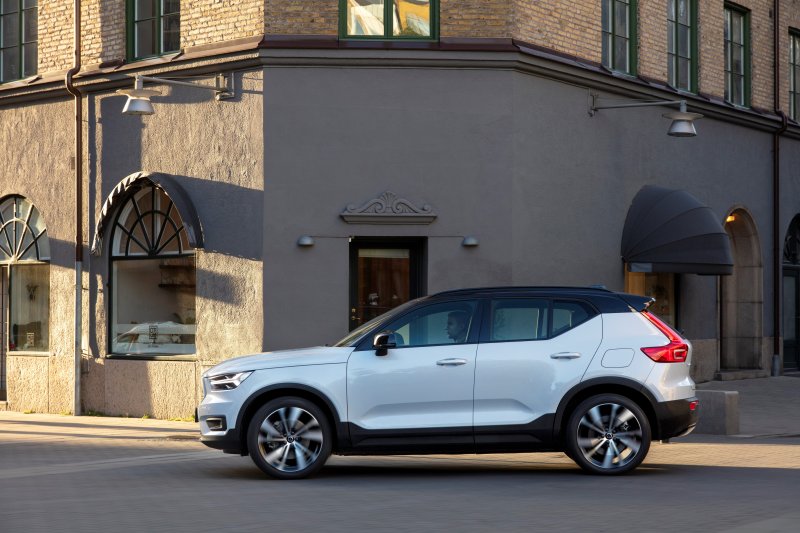VOLVO’S made an extremely reputable name for itself in the engine stakes in recent years thanks to its frugal diesels and impressive hybrids.
The Swedish firm’s something-for-everyone approach rightly won sales, but having dipped its toe in the water with the clever, forward-thinking Polestar arm, it was only a matter of time before all-electric models trickled down to its most popular vehicles.
Volvo - to me at least - has been transformed into an Audi-beating alternative and that’s high praise indeed; for too long they were seen as the boring option, safe but utterly devoid of personality, although that’s no longer the case.
Cars like the XC40 have been around for a good few years now and despite the small SUV market being crammed, Volvo’s effort still feels absolutely at the top of its game. This version - the Recharge P8 - ditches the traditional internal combustion engine and instead relies solely on electric power.
The £50,000 P8 is powered by a 78kWh lithium ion battery pack mounted under the floor, feeding two electric motors, with one on each axle to provide four-wheel-drive. That power pack delivers 402bhp, 60mph in an absurd sub-five-second time and - key of all - boasts a very handy 260-mile range.
To be taken seriously in the now ultra-competitive EV market, ranges simply have to be approaching those of a traditional petrol engine and the Volvo’s is bang on the money.
However, the crux of every EV is the ability to charge, and charge in a time that’s convenient to its owner. You’ll get an 80 per cent top-up in about 40 minutes on a rapid charger, but you’ll be left dismayed - as with every electric car - if you’re using a standard three-prong household socket as you’ll be waiting a working day to secure anything worthwhile.
The charging infrastructure - while improving - is still nowhere near the level it has to be to coax more people into ditching traditional combustion engines, but that absolutely is on the government and not brilliant manufacturers like Volvo who are leading the way.
The Recharge is different enough from its XC40 stablemates looks-wise to set it apart, with a smoother front grille to set it apart, but it retains the brilliant interior I’ve grown to love over the last few years. Open the door and you’re met with quality: it still feels plush, it’s incredibly well-made and doesn’t feel like a five-year-old design.
Start it up and you’re obviously met with silence; there’s no key or button to push, you just select ‘D’ on the shifter and away you go. It drives very much like a ‘normal’ XC40 despite its extra mass, but one thing that immediately stands out is its downright ridiculous turn of pace. As it’s electric, it’s instant, it’s like stepping on a landmine and it lunges forward at an alarming rate. It’s addictive, but clearly not great if you’re intent on achieving as many miles as possible from a charge.
Several years ago, when I first drove EVs, I was constantly worrying about ranges and fast chargers, but it becomes second nature and the angst soon stops. You learn where to go, you plan accordingly if it’s a long-distance jaunt, and in turn it never becomes a chore. Sure, it isn’t as easy as lifting a fuel pump out of its nozzle, but it’s certainly not a major drawback as perhaps I was thought it was.
The XC40 - in every guise - is an exemplary car and one that can do it all with ease, but the electric version just adds to its greatness, offering a practical range and an abundance of pace.
It’s brilliant - try one and you won’t be disappointed.



























